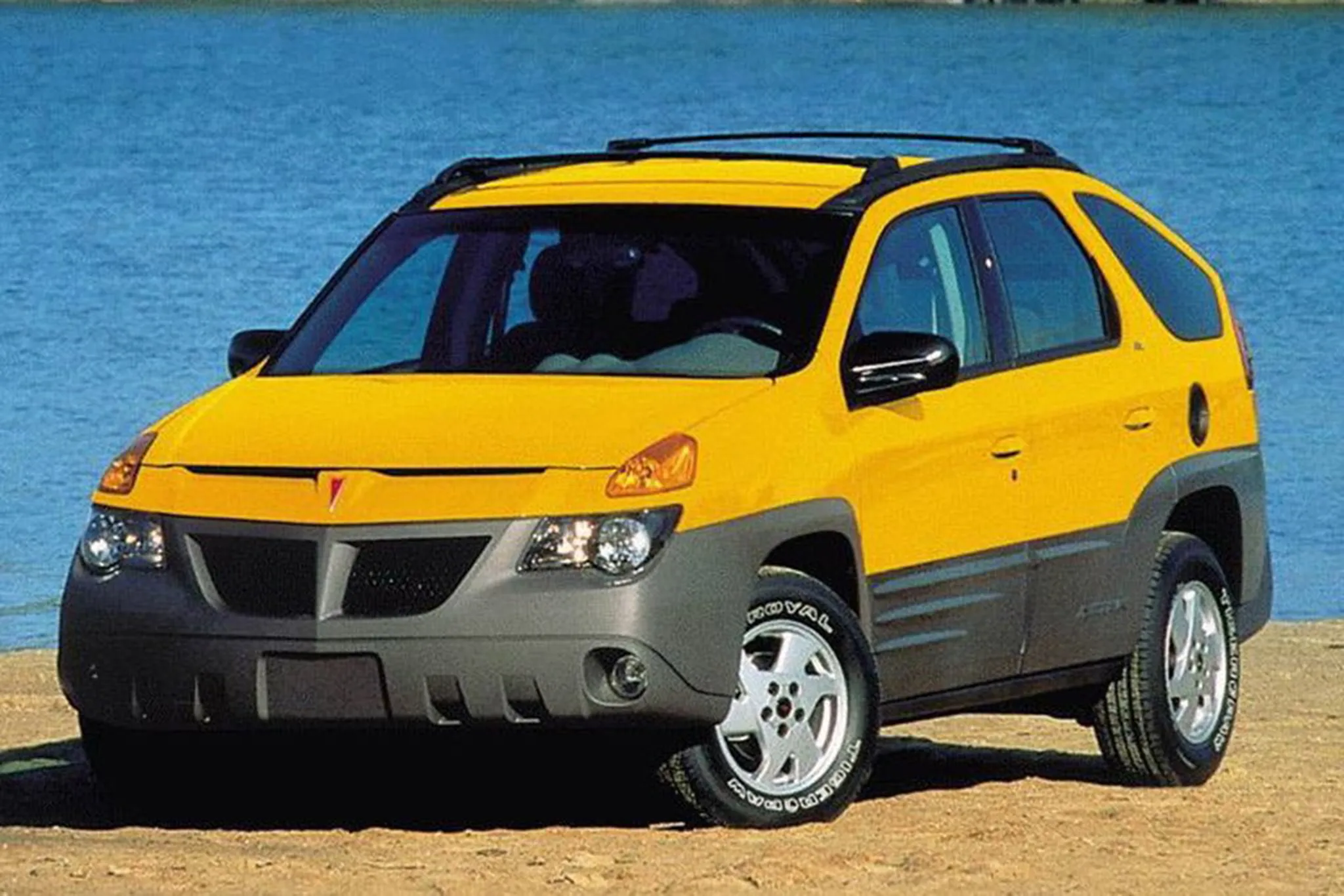The 2000s were a transformative era in the automotive world—an intersection of late-90s durability and the early push toward modern tech, safety features, and evolving design trends. It was a decade that birthed legends, flops, and everything in between.
Today, some cars from that era still roam the roads with surprising regularity, a testament to their build quality, simplicity, and owner loyalty. Others, however, seemed to vanish almost as quickly as they appeared, victims of poor design, bad timing, or mechanical unreliability.
In this piece, we take a closer look at both sides of the story. First, we’ll celebrate five cars from the 2000s that have defied the odds and continue to be spotted in traffic, parking lots, and used car lots—many with well over 150,000 miles on the clock and still going strong.
Then, we’ll dig into the other side of the spectrum: five vehicles that launched with ambition but were so forgettable—or problematic—that they disappeared from the public eye almost instantly.
Whether you’re feeling nostalgic, shopping used, or just curious about which cars became icons and which became cautionary tales, this list is a window into one of the most fascinating decades in modern automotive history.
Also Read: 5 Cars With Legendary Resale and 5 That Nobody Wants
5 2000s Cars Still on the Road
Some cars fade into obscurity. Others become street furniture—everyday fixtures you barely notice because they’re just always… there.
The 2000s gave rise to an interesting class of vehicles that, while not necessarily exciting, earned reputations for resilience, practicality, and longevity. These weren’t supercars or collector’s items.
They were everyday workhorses—family sedans, compact commuters, and budget buys that overachieved on durability, often outlasting vehicles that cost thousands more.
What makes these cars special isn’t luxury, speed, or even looks. It’s their ability to survive daily life—through first owners, second owners, teenage drivers, and harsh weather.
They were built with just the right blend of simplicity and quality, during a time when automakers still favored durability over disposable tech and overcomplicated electronics.
Many of these cars didn’t get the respect they deserved when new. They were overlooked on dealer lots or considered “appliances” rather than exciting choices.
But time has revealed their worth. You still see them running today, often with faded paint and dented fenders—but still running, and running well.
We’re highlighting these five 2000s cars not because they were flashy, but because they’ve proven to be virtually unkillable. If you’ve ever driven one—or are still driving one—you know exactly why they’ve stuck around.
1. Toyota Corolla (2003–2008)
If there’s one car from the 2000s that seems almost immune to time, it’s the 2003–2008 Toyota Corolla. This generation, known internally as the E120/E130 series, was built with one goal in mind: dependability.
While the Corolla has always had a reputation for reliability, this specific era represents a perfect blend of mechanical simplicity, efficiency, and bulletproof engineering that has made it one of the most commonly seen 2000s cars still on the road today.
Under the hood, most models came with the 1.8L 1ZZ-FE inline-four engine—a powerplant so reliable it became a favorite among commuters, rideshare drivers, and even budget racers.
With proper maintenance, these engines regularly cross the 300,000-mile mark with no major overhauls. The timing chain setup (as opposed to a belt) reduced the need for costly replacements, and the overall design was straightforward and easy to service.
Transmissions—whether the 5-speed manual or the 4-speed automatic—are similarly bulletproof. They may not shift like modern 8-speeds, but they’re dependable, simple, and cheap to fix.
This drivetrain combo made the Corolla a low-maintenance dream, especially for first-time drivers and cost-conscious families.
Fuel economy is another strong point. With EPA ratings of around 30–35 mpg, the Corolla was, and still is, one of the most efficient non-hybrid compact sedans on the market.
Combine that with a spacious interior, smooth ride quality, and minimal operating costs, and it’s no wonder these cars are everywhere—especially in urban and suburban areas.
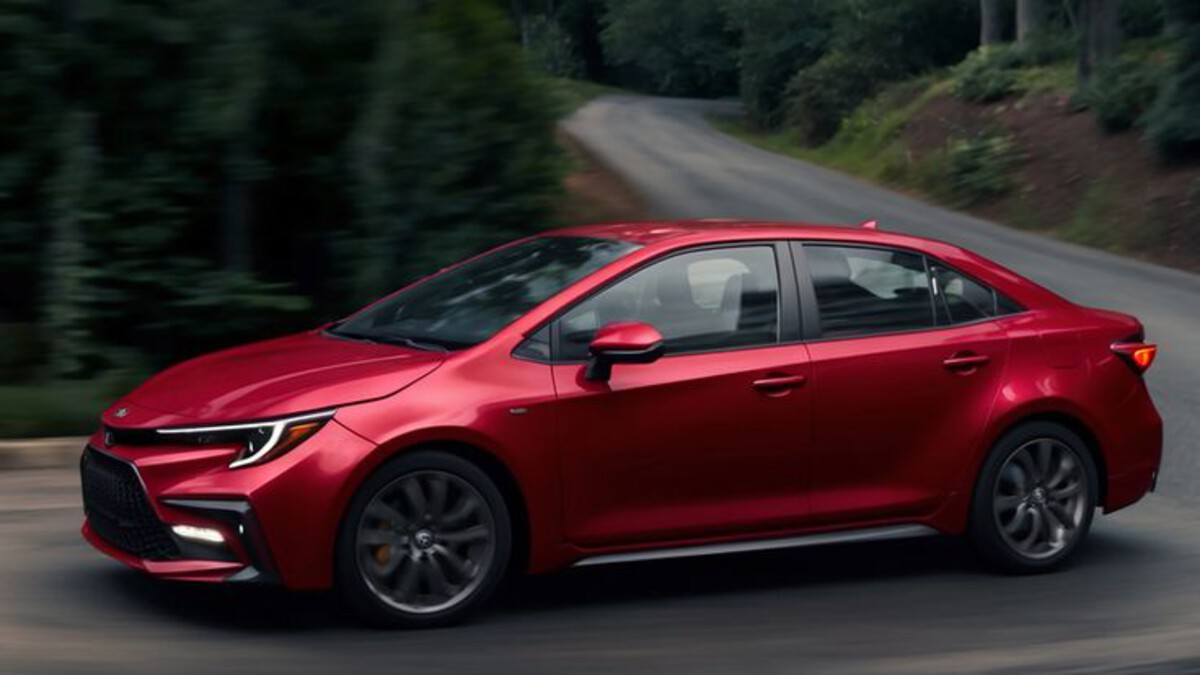
Perhaps most importantly, the 2003–2008 Corolla benefitted from Toyota’s conservative approach to design.
While other manufacturers were experimenting with complex infotainment systems and advanced electronics, Toyota kept things simple. The result? Fewer things to break, fewer expensive repairs, and more cars still on the road today.
You’ll see these Corollas in college parking lots, delivery fleets, and on long highway commutes—often with worn paint, mismatched hubcaps, and decades of stories. But they keep going.
In a world full of cars that are too complicated for their own good, the 2003–2008 Corolla is a shining example of everything a commuter car should be: durable, efficient, and unbreakably practical.
2. Honda Civic (2001–2005, 7th Generation)
Few cars define the 2000s like the Honda Civic, especially the seventh-generation model sold between 2001 and 2005. Long before Honda embraced turbochargers and touchscreen-heavy interiors, the Civic was a masterclass in simplicity, efficiency, and mechanical longevity.
This generation, in particular, hit the sweet spot between refinement and ruggedness—and it shows, because these Civics are still everywhere.
Most commonly equipped with the 1.7L D17 engine, this Civic wasn’t built to win races—but it was designed to last.
With a non-interference design in most trims and easy access for DIY maintenance, the D17 series engine is capable of running beyond 250,000 miles with minimal drama.
Oil changes, timing belts, and the occasional gasket replacement are typically all it needs. For the HX and EX trims, VTEC added a touch of efficiency and power, while the base DX trim kept things refreshingly simple.
Transmission options included a smooth-shifting 5-speed manual and a 4-speed automatic. While the autos aren’t bulletproof, they’re far more reliable than many CVTs that came after. The manual versions, especially, are prized for their durability and fun factor—something Civic fans still seek out today.
Structurally, the 7th-gen Civic was solid. While rust can be an issue in northern climates—especially on rear wheel wells and undercarriages—many examples have held up remarkably well thanks to decent build quality and corrosion protection.
The suspension, though soft for spirited driving, was tuned perfectly for daily use, absorbing rough roads with ease.
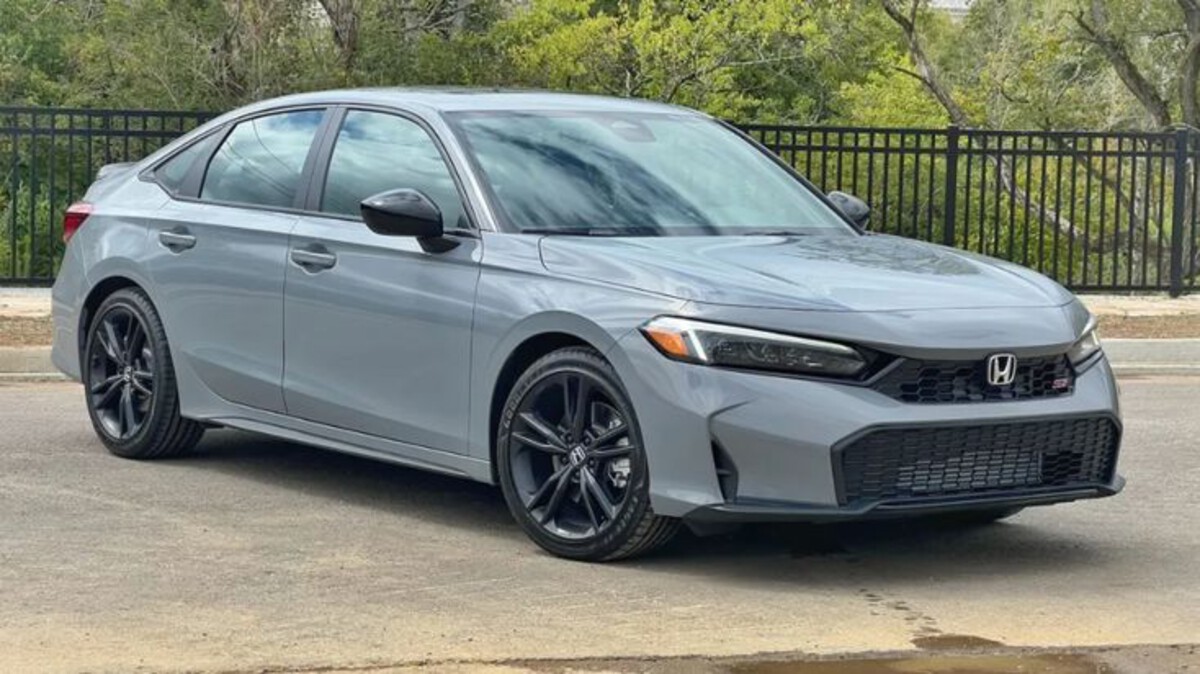
Inside, the cabin was basic but well-built. Materials may not have screamed “luxury,” but the layout was functional, the controls were intuitive, and everything just worked—even 20 years later.
Many original owners never had a reason to part with them, and used buyers continue to flock to this generation for its affordability and reliability.
Why do you still see them? Because they just keep going. The 2001–2005 Civic is still a favorite for students, commuters, and budget-conscious buyers who need something dependable.
Add to that Honda’s massive parts availability and enthusiast support, and it’s no surprise this Civic is one of the most enduring cars of the 2000s.
3. Ford Crown Victoria (1998–2011, especially 2000s models)
The Ford Crown Victoria isn’t just a car—it’s a legend in durability circles. If you’ve seen one in a police fleet, taxi lineup, or driven behind one doing 10 mph under the speed limit in the left lane, you already know: the Crown Vic refuses to die.
While its core design dates back to the late 1990s, the 2000s models—especially those produced for law enforcement and municipal use—have proven themselves to be nearly indestructible. And many are still on the road today, logging miles like it’s their job. Because, well, it was.
Powered by Ford’s 4.6L SOHC Modular V8, the Crown Victoria doesn’t offer eye-watering speed, but it delivers smooth, consistent power with one of the most proven engine designs in Ford’s history.
Known for hitting 300,000+ miles, these engines rarely suffer catastrophic failures. Combine that with a simple 4-speed automatic transmission and a traditional rear-wheel-drive layout, and you have one of the most serviceable drivetrains ever put in a full-size sedan.
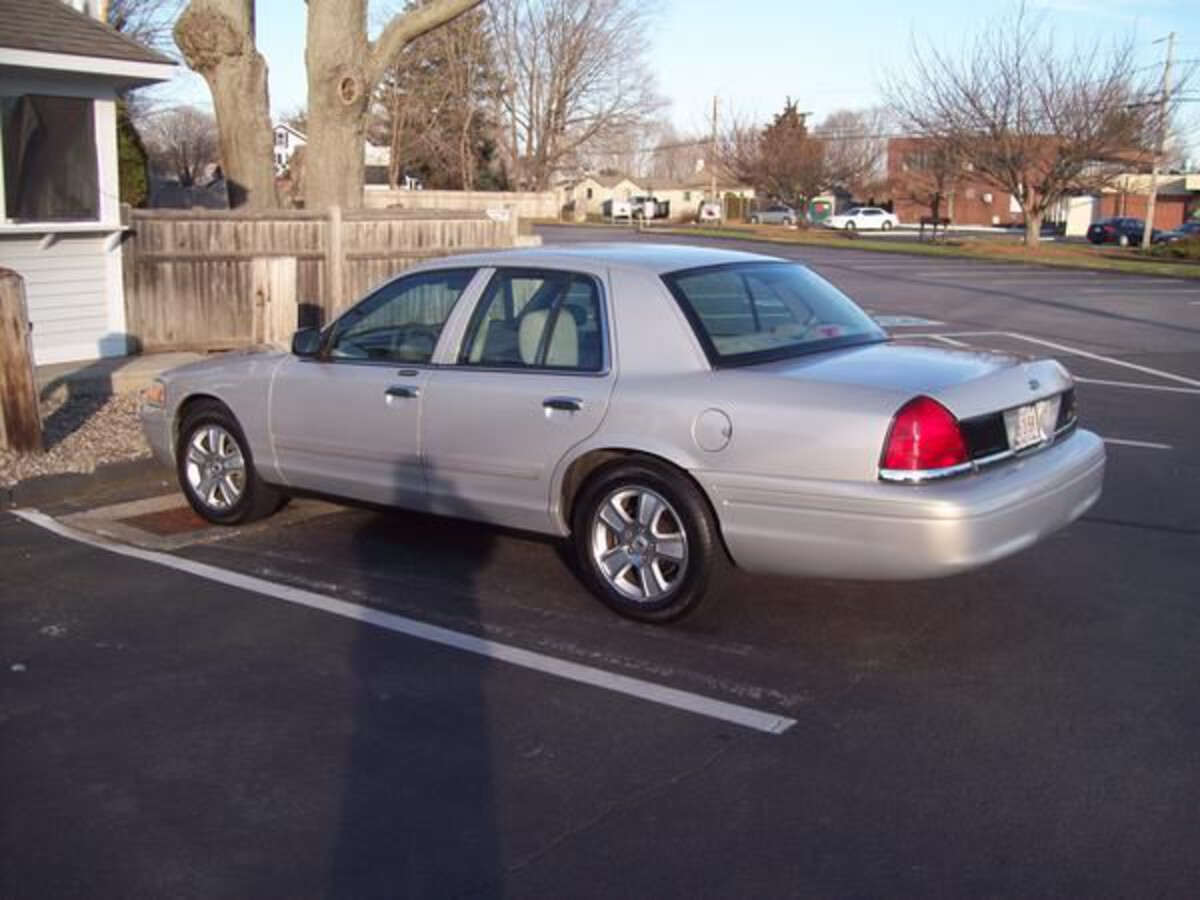
The Panther platform that underpins the Crown Vic is also a key to its survival. Body-on-frame construction—something rare in sedans—makes the car incredibly durable and easy to repair. A minor accident? Just unbolt a few panels. Hit a curb? Swap the axle. It’s a car built like a truck.
Maintenance is cheap and straightforward. Fluids, brakes, tires—that’s most of what you’ll need.
The parts are dirt cheap thanks to the car’s long production run and its popularity with police departments and taxi services. In fact, ex-police interceptors often become civilian commuters, and they just keep on running.
Interior materials were simple and built to take a beating. While not plush, Crown Vics were built for abuse—vinyl floors, durable seats, and basic electronics that rarely fail. Even the digital displays and power accessories have aged better than most competitors.
Today, Crown Victorias still populate the roads, especially in small towns, government fleets, and enthusiast garages. They’re often passed down through families, sold between mechanics, or hoarded by taxi companies who know their worth.
The Crown Vic wasn’t flashy, but it’s a 2000s icon of unkillable engineering. In a world of disposable cars, this one was built to survive everything—and often does.
4. Subaru Outback (2000–2004, 2nd Gen)
The early-2000s Subaru Outback, especially from model years 2000 to 2004, quietly became one of the most enduring cars of its era.
Born from the Legacy platform but raised with taller suspension and rugged styling, the second-generation Outback became a favorite among outdoor enthusiasts, snowbelt residents, and anyone who needed a go-anywhere vehicle that didn’t come with the size—or fuel consumption—of a traditional SUV.
Two decades later, these Outbacks are still crisscrossing America, often with bumper stickers, roof boxes, and a dog in the back.
What makes this generation stick around? It starts with Subaru’s symmetrical all-wheel drive system, which was standard across all trims. It gave the Outback exceptional stability in rain, snow, and gravel without the complexity of part-time systems.
People in rural or mountainous areas still swear by it. Whether it was hauling camping gear to the Adirondacks or getting through Chicago winters, the Outback just worked.
The powertrain, particularly the 2.5L flat-four “boxer” engine, offered decent performance and excellent fuel economy for an all-wheel-drive wagon. While early 2.5s were infamous for head gasket issues, Subaru eventually improved the gasket design.
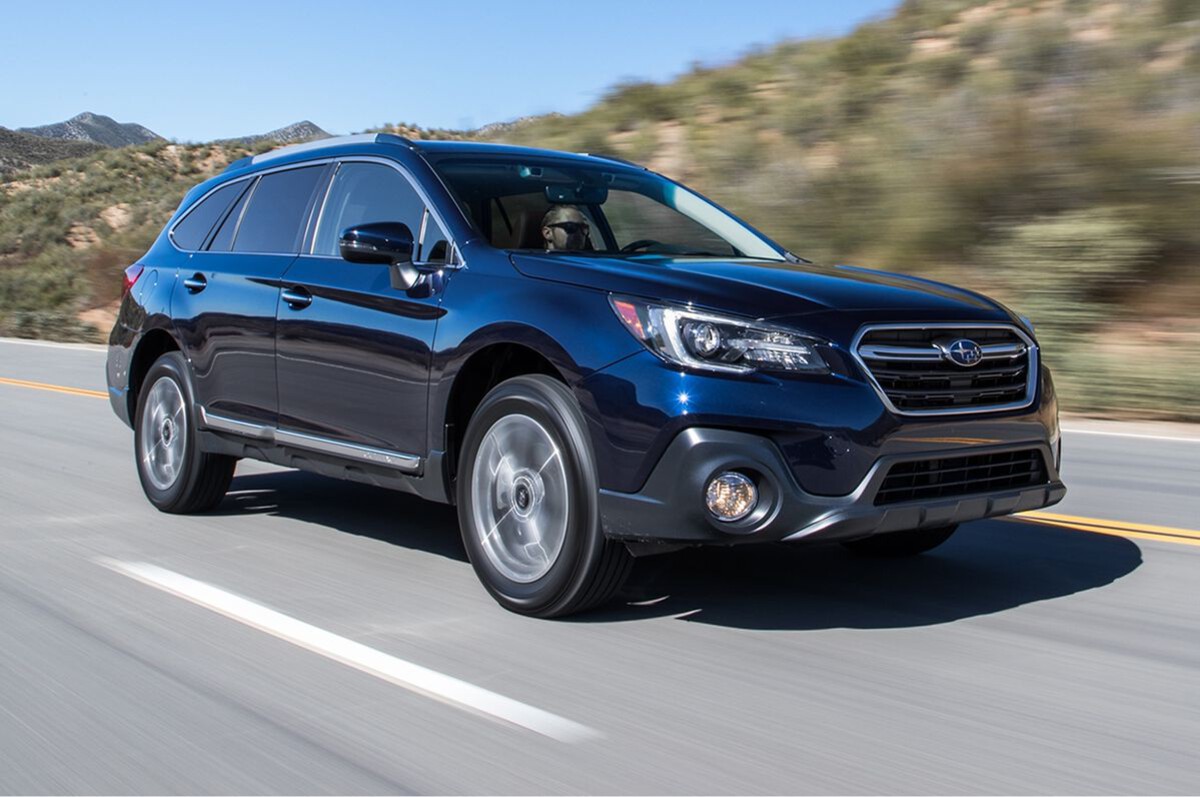
Owners who replaced them with the updated version often reported another 150,000 miles of smooth sailing. With proper maintenance, these engines can reach 250,000–300,000 miles easily.
Transmission options included a durable 5-speed manual and a 4-speed automatic. The manual versions, especially, are still prized in northern states and outdoorsy communities for their added control on rough terrain. The automatic was slower and less refined, but remarkably reliable.
Interior quality was also better than average for the time. Subaru kept the cabin practical, with durable cloth seats, a logical dash layout, and just enough technology to be useful without causing long-term headaches. Heated seats, standard on many trims, made them a cold-weather favorite.
Another major advantage? Community support. Subaru owners are notoriously loyal, and parts (both OEM and aftermarket) are easy to find. From exhaust systems to upgraded suspensions, these cars are endlessly modifiable and repairable.
Simply put, the 2000–2004 Subaru Outback is one of the few 2000s wagons still roaming city streets, back roads, and national parks alike. It was built for the long haul—and it’s still hauling.
5. Toyota Camry (2002–2006, XV30 Generation)
If there’s a king of 2000s-era commuter cars still ruling the road today, it’s the 2002–2006 Toyota Camry.
Known internally as the XV30 generation, this Camry didn’t try to be exciting or bold—it was built with one mission: get from A to B for as long as possible, with the fewest problems imaginable. And judging by the thousands still quietly gliding down highways and local streets today, it absolutely succeeded.
Under the hood, most models were powered by the 2.4L 2AZ-FE inline-four engine—a workhorse known for smooth operation, excellent fuel economy, and long-term reliability.
With proper oil changes and basic upkeep, it’s common to see these engines pushing past 300,000 miles.
While some early models developed oil-burning issues due to piston ring design, Toyota quietly updated the components, and most well-maintained engines perform flawlessly.
Buyers seeking more power could opt for the 3.0L or 3.3L V6 options, which added refinement without sacrificing longevity.
Both engines were mated to 4-speed automatics—simple and durable gearboxes that may lack modern gear counts but are far less prone to costly failure. Toyota’s approach to drivetrain engineering during this period was refreshingly conservative—and that caution paid off.
Ride quality is one of the Camry’s biggest strengths. The suspension is tuned for comfort, not corner carving, and it shows. Whether navigating potholed streets or long commutes, the Camry remains quiet and composed, even two decades after it left the showroom floor.
Inside, the cabin is practical and well laid-out. Materials weren’t luxury-grade, but they’ve aged gracefully.
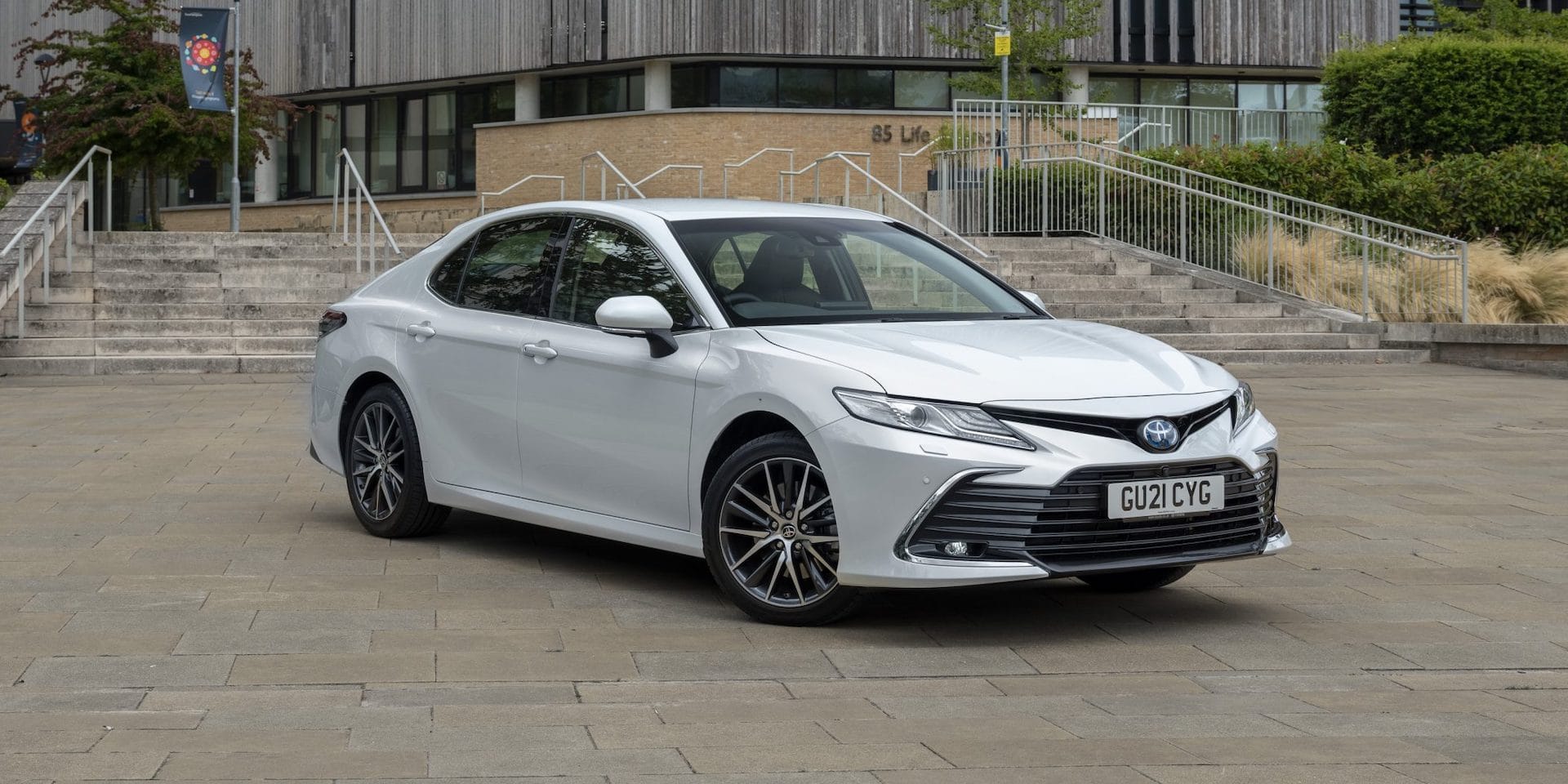
Controls are intuitive, electronics are dependable, and even basic models came with power features that still function reliably. You won’t find gimmicky tech or delicate trim pieces—just sturdy components that continue to work.
The Camry’s popularity also means parts are everywhere. Whether you’re replacing a water pump or fixing a door handle, it’s all affordable and accessible. Toyota’s commitment to supporting older vehicles has helped keep these Camrys alive for generations.
In short, the 2002–2006 Camry doesn’t shout for attention. It just keeps going—mile after mile, owner after owner. It’s the ultimate testament to Toyota’s reputation for durability, and why this car remains a common sight on roads around the world.
5 2000s Cars That Vanished Instantly
For every Toyota Camry or Honda Civic that stands the test of time, there’s a long list of cars from the 2000s that disappeared almost as quickly as they arrived.
These were vehicles that either failed to capture the public’s interest, suffered from fatal design or reliability flaws, or were simply so forgettable that no one noticed when they stopped appearing on dealership lots—or on the road.
The 2000s were a transitional period in the automotive industry. Automakers were experimenting with new body styles, pushing badge engineering, and trying to appeal to niche markets that didn’t really exist.
Some vehicles were rushed to production, lacked proper testing, or were priced completely out of their value range. Others may have sold decently at first, but faded fast due to poor long-term reliability, sky-high repair costs, or lack of aftermarket support.
These cars weren’t necessarily all terrible to drive—some even had great ideas behind them. But they couldn’t gain traction in the market, and more importantly, they didn’t last.
Within just a few years, they vanished from roads, trade-in lots, and even driver memory. Today, spotting one in the wild is like seeing a unicorn on wheels.
In this section, we’re diving into five cars from the 2000s that seemingly vanished overnight. Whether they were flops, sales failures, or just victims of bad timing, these models serve as a reminder that not every car built for the masses survives the test of time.
1. Chrysler Sebring Sedan (2001–2006)
If there’s one 2000s sedan that epitomizes the phrase “here today, gone tomorrow,” it’s the Chrysler Sebring. While the nameplate lingered for a few more years in different forms, the 2001–2006 Sebring sedan is a model that vanished from the road with barely a trace.
Once aimed at the heart of the midsize market, it now feels like a ghost—rarely seen, hardly missed, and quietly forgotten.
The Sebring had the misfortune of trying to compete with industry titans like the Toyota Camry and Honda Accord while being woefully underprepared to match them in quality or longevity.
Under the hood, the standard 2.4L inline-four engine was serviceable but unrefined, while the optional 2.7L V6 became infamous for its sludge-prone design.
Poor oil circulation and a lack of tolerance for neglect led to premature engine failure—often well before the 100,000-mile mark, and sometimes as early as 60,000. The repair bills were frequently higher than the car’s resale value.
The 4-speed automatic transmission didn’t help either. Known for rough shifting, delayed engagement, and eventual failure, it became yet another reason owners were quick to trade in—or tow out—their Sebrings.
Inside, the problems continued. The cabin was filled with low-grade plastics, rattling trim, and quickly fading materials.
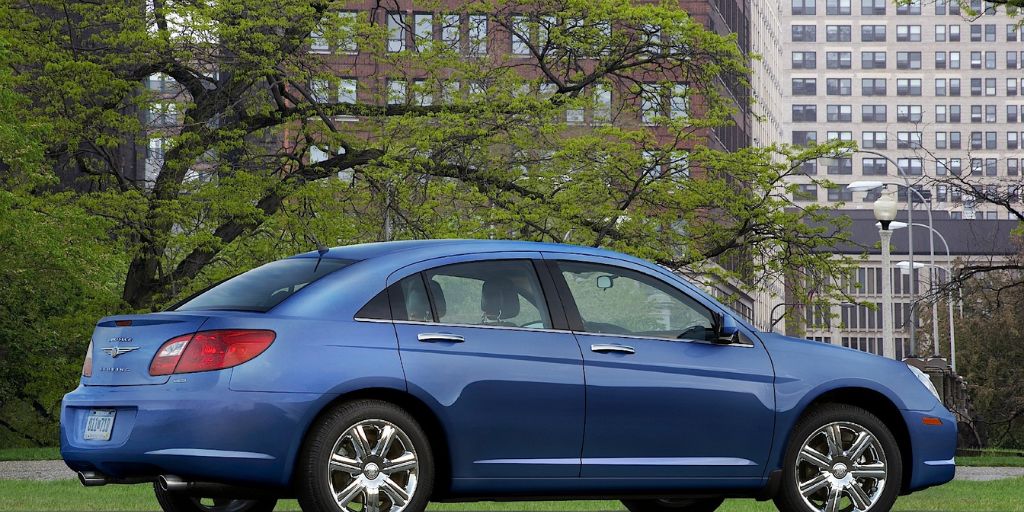
Dashboards cracked, electronics failed, and build quality simply couldn’t stand the test of time. Comfort features like power windows and door locks frequently malfunctioned, while interior design aged poorly in both style and execution.
Then there was the styling—anonymous at best, awkward at worst. While Chrysler aimed for upscale cues, the execution landed somewhere between bland and forgettable. It lacked both the refinement of Japanese rivals and the boldness of American competitors like the Ford Fusion.
By the early 2010s, most Sebrings of this generation had disappeared. Owners didn’t hang on to them. Mechanics didn’t recommend fixing them. And the used car market wasn’t interested in saving them. Even junkyards don’t see many anymore—they’ve already come and gone.
The Chrysler Sebring sedan is a textbook case of a 2000s car that vanished instantly: not because it never existed, but because it never earned a reason to stay.
2. Suzuki Verona (2004–2006)
The Suzuki Verona might just be the most forgotten midsize sedan of the 2000s—and for good reason. Launched in 2004 with hopes of giving Suzuki a foothold in the mainstream car market, the Verona was gone from U.S. showrooms in just three years. Today, it’s not just rare—it’s practically extinct.
Suzuki, known for building compact cars and motorcycles, partnered with GM-Daewoo to bring the Verona to life. What arrived was essentially a rebadged Daewoo Magnus, marketed as a budget-friendly alternative to the Toyota Camry or Honda Accord. But the execution fell flat from day one.
The Verona came with only one engine choice: a 2.5L inline-6 that sounded promising on paper but delivered just 155 horsepower—less than most 4-cylinders at the time.
Worse, it was mated to a sluggish 4-speed automatic transmission with no manual option. Performance was tepid at best, and fuel economy was disappointing for a car that lacked power—averaging just 20–22 mpg in real-world driving.
Mechanically, the Verona was riddled with problems. Engine reliability was poor, plagued by oil leaks, cooling issues, and hard-to-diagnose sensor failures. The transmission was clunky, with rough downshifting and early failure reports.
Finding parts was a nightmare, as it shared little with domestic GM products, and Daewoo’s limited U.S. presence meant expensive or slow imports for even basic components.
Interior quality was uninspiring. While Suzuki tried to dress up the Verona with wood accents and leather seats in higher trims, the overall materials felt dated and cheap.
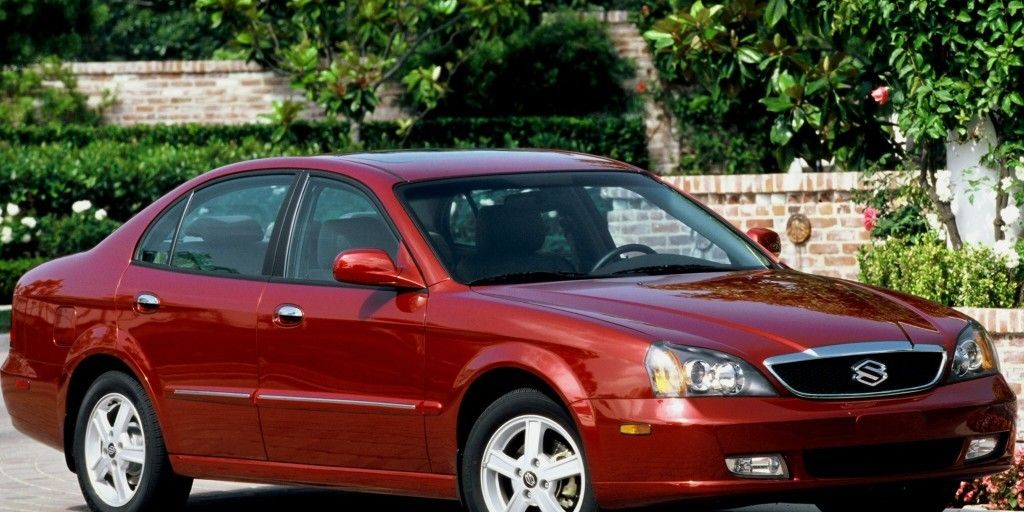
Electronics were prone to early failure, including faulty instrument clusters and glitchy HVAC controls. With minimal brand recognition and underwhelming features, few buyers gave it a second glance.
Sales were dismal, and Suzuki pulled the plug in 2006. By then, its resale value had already plummeted, and few mechanics were eager to service them.
As warranty support dried up, so did owner patience—and most Veronas quickly ended up scrapped, parted out, or abandoned altogether.
The Verona didn’t just vanish—it barely left a footprint to begin with. It’s a perfect example of a car that never earned a place on the road and rapidly faded into obscurity.
3. Pontiac Aztek (2001–2005)
Few cars from the 2000s are as infamous—or as instantly rejected—as the Pontiac Aztek. Universally mocked for its bizarre, almost alien-like design, the Aztek became a symbol of GM’s struggle to connect with younger buyers and modern tastes.
While its sales weren’t catastrophic in the first year, public reaction was so overwhelmingly negative that it quickly became the butt of automotive jokes, ultimately dooming it to vanish from the roads within a decade.
Let’s start with the styling. The Aztek’s front fascia, awkward proportions, oversized cladding, and split-level rear end were all design decisions that managed to offend just about every aesthetic sensibility.
It was supposed to be edgy, adventurous, and youth-focused—but instead, it became a lesson in how not to design a crossover. It’s no surprise that even as recently as the 2010s, owners were removing Pontiac badges out of embarrassment.
Beneath the skin, the Aztek shared a platform with GM’s minivans, resulting in a front-wheel-drive layout and a soft, uninspiring driving experience.
The available 3.4L V6 was underpowered and mated to a 4-speed automatic that struggled under load. Worse still, the engine was known for intake manifold gasket failures—a common problem in GM V6s of the time that led to coolant leaks and engine damage if not caught early.
Interior quality was another issue. While the Aztek boasted interesting features—like a removable cooler, rear tent accessory, and configurable rear seats—the cabin materials were cheap, plastics creaked, and build quality was inconsistent.
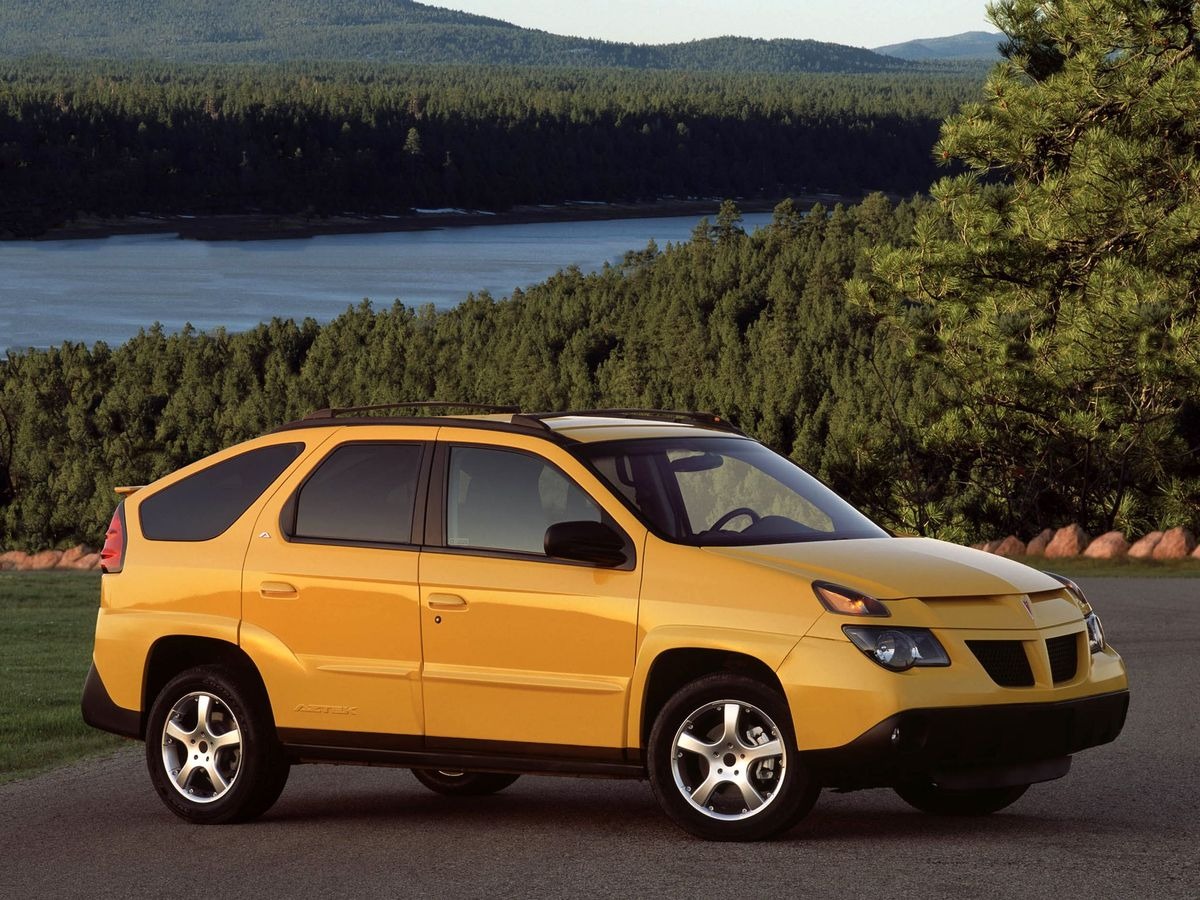
Electrical gremlins were common, including failing window regulators, power locks, and dash displays.
Despite a quirky charm and later fame as Walter White’s car in Breaking Bad, the Aztek never earned long-term loyalty. Many owners traded them in early, and resale values tanked within just a few years. GM discontinued it in 2005, replacing it with the much more successful Pontiac Torrent.
Today, spotting an Aztek is a rare event. Most were junked, scrapped, or driven into the ground by second or third owners unwilling to invest in costly repairs.
It’s a perfect example of how poor design and mechanical mediocrity can combine to make a car vanish quickly—even one that aimed to be revolutionary.
4. Isuzu Axiom (2002–2004)
The Isuzu Axiom was supposed to mark a new direction for the fading Japanese automaker—a stylish, SUV-crossover hybrid that would modernize its image and appeal to American families looking for a capable yet refined vehicle.
Instead, it became one of the shortest-lived and most forgotten vehicles of the 2000s, disappearing almost as quickly as it arrived. Today, the Axiom is so rare on the road that many car enthusiasts have never even seen one in person.
Launched in 2002, the Axiom was based on the Isuzu Rodeo’s body-on-frame chassis but wrapped in a futuristic-looking shell that felt more concept car than family SUV.
While its bold, angular styling stood out at the time, the mix of rugged platform and awkward proportions didn’t resonate with buyers. It was too truck-like for crossover fans and too plasticky and compromised for serious off-roaders.
Under the hood, the Axiom came with a 3.5L V6 that produced decent power—up to 250 hp in later models—but it was mated to a problematic 4-speed automatic. Owners reported poor shifting, transmission failures, and premature drivetrain issues.
Engine reliability was mixed, with some suffering from oil consumption and valve train noise even before 100,000 miles.
Then there was the ride quality—despite the name “Axiom,” there was nothing absolute about its comfort.
It combined the stiff, bouncy ride of a truck with none of the handling benefits of a car-based SUV. The suspension wore quickly, and parts became increasingly hard to find once Isuzu’s U.S. presence dwindled.
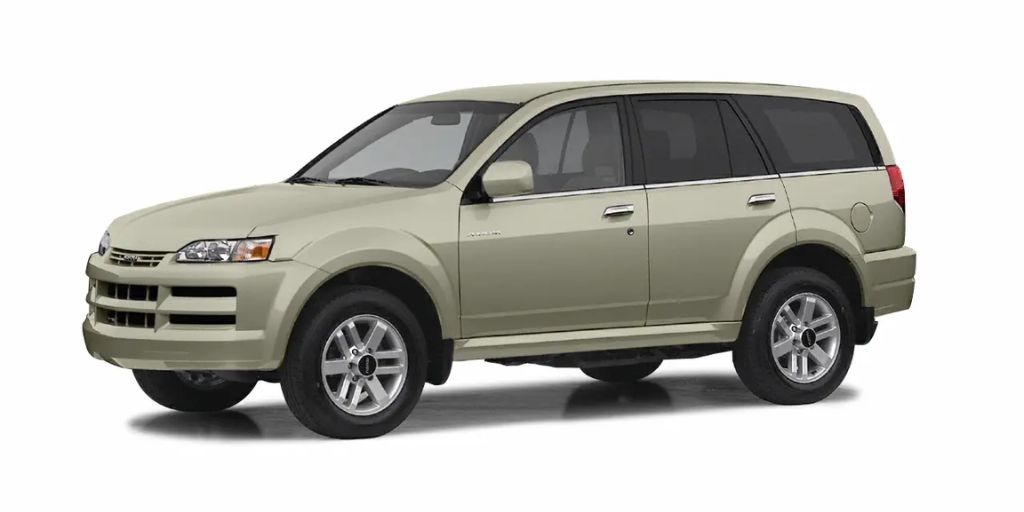
Interior quality didn’t help. The dashboard design felt outdated even at launch, and materials were cheap and quick to deteriorate.
Features like power accessories and audio systems failed early, and the ergonomics left much to be desired. It just couldn’t compete with better-built rivals like the Toyota Highlander or Honda Pilot.
Isuzu exited the U.S. passenger vehicle market shortly after in 2008, and support for the Axiom disappeared with it. As a result, repairs became costly and impractical, and most Axioms were simply retired rather than restored.
Today, the Isuzu Axiom is all but extinct. It tried to carve out a niche in a crowded segment—but its confused identity, reliability woes, and fading brand made it vanish from roads almost overnight.
5. Mitsubishi Endeavor (2004–2011)
The Mitsubishi Endeavor had all the makings of a solid midsize SUV: bold styling, a V6 engine, a spacious interior, and a major automaker behind it.
But despite being produced for nearly a decade, the Endeavor never gained traction with American buyers—and after a short run of mild sales, it quietly disappeared from both showrooms and roadways. Today, it’s one of the rarest 2000s-era SUVs you’ll ever see, and most have either been scrapped or forgotten.
Introduced in 2004, the Endeavor was part of Mitsubishi’s attempt to revitalize its U.S. lineup. It shared its platform with the Galant sedan and was powered by a 3.8L V6 producing 215 to 225 horsepower depending on the year.
While the engine itself was reasonably stout, the 4-speed automatic transmission was dated even at launch and proved to be a weak point over time. Drivers complained of delayed shifting, slippage, and costly repairs that often occurred well before the 120,000-mile mark.
Ride quality was adequate, but the Endeavor never excelled in any one area. It wasn’t as refined as the Honda Pilot, as rugged as the Jeep Grand Cherokee, or as efficient as the Toyota Highlander. It occupied a strange middle ground that didn’t give buyers a clear reason to choose it over better-established rivals.
The interior also fell short. While Mitsubishi equipped the Endeavor with a decent list of features, the cabin materials were low-grade, and the fit and finish were inconsistent.
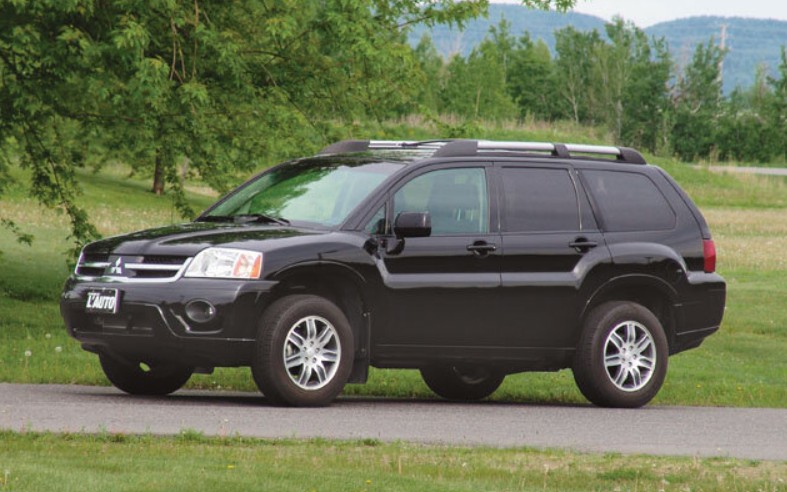
Rattles, faded plastics, and malfunctioning electronics became common complaints. Worse still, Mitsubishi’s limited dealer network and declining brand reputation in the U.S. made service and resale increasingly difficult.
By the time Mitsubishi gave the Endeavor a facelift in 2010, it was already too late. Sales had plummeted, and the SUV was discontinued quietly in 2011 with no direct replacement.
Few mourned its loss, and even fewer kept them on the road. With poor parts availability, declining resale value, and little enthusiast support, the Endeavor has become nearly invisible in today’s traffic.
In the end, the Endeavor is a perfect case of a car that didn’t do anything terribly wrong—but didn’t do anything notably right either. And that’s exactly why it vanished.
The 2000s were a defining decade for the auto industry—full of experimentation, transition, and the push for broader market appeal. For some cars, this era laid the groundwork for long-term success.
For others, it became a graveyard of forgotten nameplates, failed experiments, and vehicles that just couldn’t find their footing.
The contrast between the cars that are still running today and those that vanished almost instantly is a testament to what truly matters in automotive design: reliability, purpose, and execution.
The cars that continue to thrive—the Toyota Corolla, Honda Civic, Crown Victoria, Subaru Outback, and Toyota Camry—share a few common traits. They were built with simplicity, engineered for durability, and supported by strong aftermarket and service networks.
They may not have dazzled critics at launch, but their staying power speaks louder than any original review ever could. They’ve survived first-time drivers, brutal weather, neglect, and the passage of time—and still remain some of the most reliable vehicles on the road.
On the flip side, the Chrysler Sebring, Suzuki Verona, Pontiac Aztek, Isuzu Axiom, and Mitsubishi Endeavor serve as cautionary tales. Some were plagued by poor engineering, others by identity crises or unremarkable design.
Most lacked long-term support, parts availability, or compelling reasons for buyers to keep them once issues began. As a result, they’ve largely vanished from both roads and memory—symbols of missed opportunities in an industry that doesn’t forgive mediocrity.
If there’s a lesson in comparing these two groups, it’s that flashy features and bold styling don’t guarantee longevity.
What truly makes a car endure is thoughtful engineering, a reputation for reliability, and the ability to adapt to changing needs over time. Cars that check those boxes earn loyalty and live long lives.
So, whether you’re reminiscing about the past or searching for your next used ride, pay attention to the survivors—they’re still here for a reason.
And remember the ones that disappeared—not to mock, but to understand what went wrong. Because in the world of cars, history doesn’t just repeat—it rides beside you, mile after mile.
Also Read: 5 Cars With Legendary Resale and 5 That Nobody Wants

